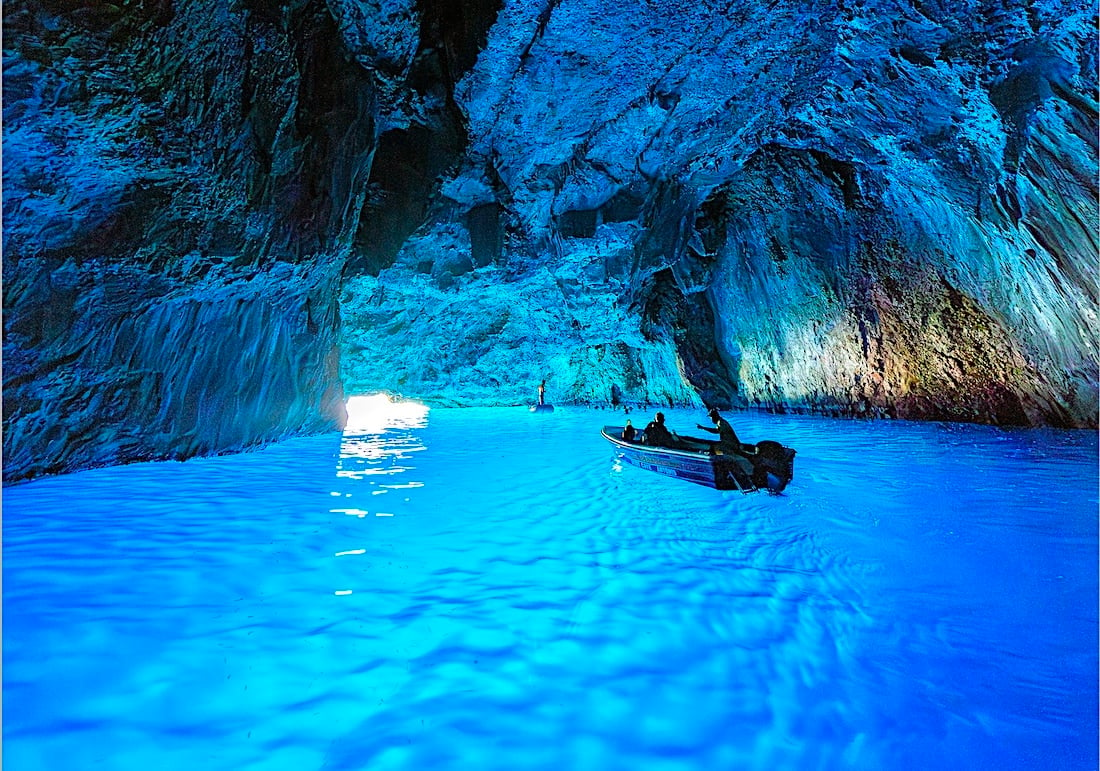

Tucked away on the southeastern edge of Greece, the island of Kastellorizo—officially known as Megisti—holds a natural wonder that remains one of the country’s best-kept secrets: the Blue Cave.
Also referred to as the “Blue Grotto” or “Fokiali,” this sea cave is a breathtaking geological formation and a dazzling spectacle of light, color, and stillness.
The Blue Cave is only accessible by sea, and getting there is an adventure in itself. Visitors must approach in small boats, often in the early morning when the sea is calm and the light is just right.
The entrance to the cave is extremely low, so low that passengers must lie flat in the boat as it slips under the rock face and into the cavern. Once inside, the narrow opening gives way to a cathedral-like space measuring about 60 meters long, 25 meters wide, and 35 meters high.

What makes the Blue Cave extraordinary is the ethereal blue glow that illuminates its interior. This effect is created by sunlight entering through an underwater opening and reflecting off the white sea floor. The result is a surreal palette of vivid, electric blues that color the water, the cave walls, and even the visitors themselves. It’s an otherworldly experience—silent, serene, and unforgettable.

The cave is not just a visual marvel but also an ecological haven. Occasionally, Mediterranean monk seals (Monachus monachus)—one of the world’s most endangered marine mammals—are seen resting within its sheltered waters. The island’s limited development and relative isolation have helped preserve this pristine environment.
Locals have long believed that the Blue Cave was once a hidden sanctuary for sea nymphs or Nereids—mythical female spirits of the sea in Greek mythology. According to legend, these ethereal beings would gather in the glowing blue light of the cave to dance and sing at dawn, hidden from human eyes. Fishermen claimed that, if one approached the cave quietly enough in the early morning, they could hear faint music echoing from inside.
Another story passed down through generations tells of pirates who once roamed the Aegean and used the cave as a secret hiding place. Because the entrance is nearly invisible from the sea and requires precise timing and flat boats to access, it was an ideal spot to stash stolen goods.
Though lesser-known than its more famous counterpart on the Italian island of Capri, the Blue Cave of Kastellorizo is no less impressive. In fact, many who have seen both describe the Greek cave as more spectacular, in part because it remains largely untouched by mass tourism. It offers a rare combination of natural beauty and tranquility that appeals to divers, nature lovers, and adventurous travelers seeking something off the beaten path.

Kastellorizo is a tiny yet strikingly beautiful Greek island lying at the southeasternmost edge of the Aegean Sea, just a few kilometers off the Turkish coast.
Despite its remote location, it boasts a deep and layered history, shaped by successive waves of conquerors—Romans, Byzantines, Knights of St. John, Ottomans, Italians—and by the resilience of its own people.
The island’s name, derived from the medieval “Castello Rosso” (Red Castle), refers to the reddish rock on which the Knights of St. John built their fortress in the 14th century. Today, the remains of that castle still crown the hill above the harbor, keeping silent watch over the colorful neoclassical houses that line the waterfront below.
